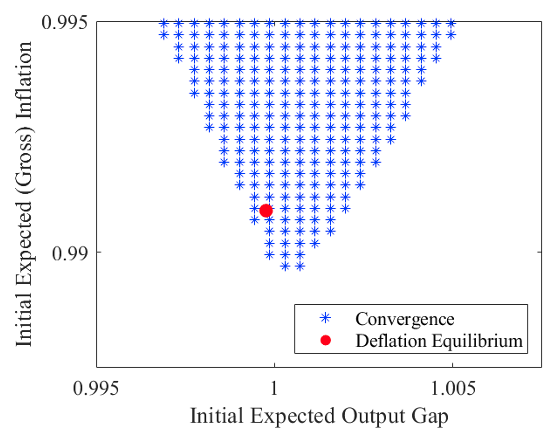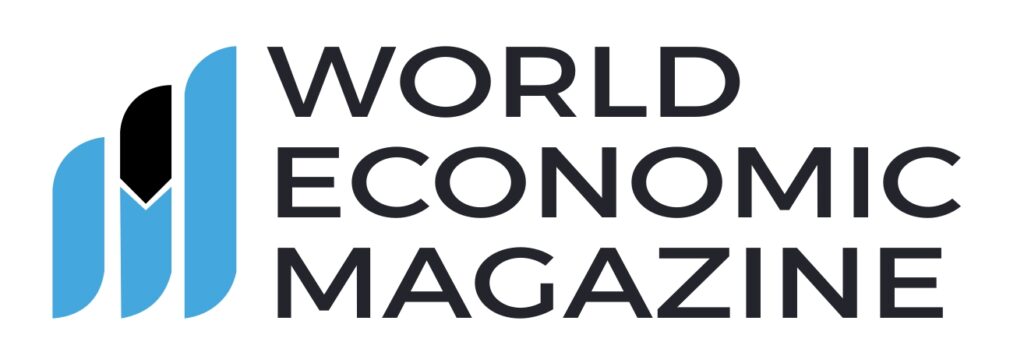
Pitfalls of average inflation targeting when agents have imperfect knowledge
Seppo Honkapohja, Nigel McClung
Recent challenges have generated interest in new monetary policy frameworks, including average inflation targeting. The Federal Reserve adopted this policy in 2020, but they have not communicated many details about the policy itself. This column argues that an opaque average inflation targeting policy can de-anchor inflation expectations from the target equilibrium – even if expectations are initially well-anchored. Policymakers should be cautious when implementing average inflation targeting.
For many years since the Global Crisis, central bank policy rates have been constrained by the zero lower bound (ZLB). Because the usual framework of inflation targeting is largely ineffective at the ZLB, the ZLB regime soon inspired central bankers and academics to consider monetary policy reform. Alternatives to inflation targeting were explored, including price level targeting, nominal GDP targeting, and average inflation targeting (AIT).1
The Federal Reserve started a review of its monetary policy strategy in 2019, and in August 2020 Chairman Powell announced that the Fed would base its new policy framework on average inflation targeting. However, Fed announcements have offered few details about how it will conduct this policy.
Recent research on average inflation targeting
AIT has not been as widely studied in the research literature as alternatives such as price level targeting, and most papers assume that agents have rational expectations (e.g. Nessén and Vestin 2005, Mertens and Williams 2019), or are boundedly rational but do not learn about policy (e.g. Budianto et al. 2020). Rational expectations research makes strong assumptions about agents’ knowledge of the economy, including the structure of monetary policy. Further, rational expectations analysis predicts that the Fed’s announcement of AIT would have a large effect on inflation expectations, though a recent Vox column by Coibion et al. (2020) provides evidence from survey data that inflation expectations responded somewhat minimally to the Federal Reserve’s announcement of average inflation targeting.
It is important to study the performance of a policy framework when there is imperfect knowledge. In a recent paper (Honkapohja and McClung 2021), we relax the rational expectations assumption and study AIT when agents have imperfect knowledge and engage in learning.
Average inflation targeting can destabilise the economy
Under AIT, policymakers use the average of past inflation rates as an indicator for policy decisions, with extended periods of above or below the target inflation rate (e.g. 2%) triggering a tightening or loosening of the policy stance. However, the transmission of AIT policy to the wider economy depends on many specific details of its implementation, including the measure of average inflation rate and the data window policymakers use to compute the average inflation rate, and also whether policymakers communicate details of the policy to private agents.
A natural starting point is to assume that the length of the data window is finite and that details of AIT are opaque to the public. This is arguably the current framework of the Fed. We study AIT under opacity in a standard model with adaptively learning agents. We show that AIT can lead to instability under learning if prices are flexible or if agents update their beliefs about the economy at a relatively fast, but empirically plausible, pace. If the inflation target is unstable, then small disturbances to inflation expectations imply permanent divergence of actual and expected inflation from the inflation target. Therefore, instability under learning is a warning signal about possible failure of the average inflation targeting policy.
Figure 1 AIT in a simple model

We show this analytically in our paper, and Figure 1 illustrates the dynamics of inflation in a simple model when AIT is introduced following a period of below-target inflation. Three features of average inflation targeting under opacity generate the slowly diverging, oscillatory dynamics displayed in Figure 1. First, interest rates remain low for long to ‘make up’ for a period of low inflation with high inflation. Second, the make-up inflation triggers a rise in interest rates and subsequent undershooting of the inflation target as more recent above-target inflation data replace the initial low-inflation data in the calculation of average inflation. Finally, long-run inflation expectations drift under learning, as agents do not understand the structure of policy and confuse temporary changes in the monetary policy stance for permanent changes in inflation, causing ever larger oscillations in inflation over time.
The unstable dynamics in Figure 1 would not occur under traditional inflation targeting frameworks that do not aim to make-up for past deviations from the target. Furthermore, the pattern of under- and over-shooting is exacerbated by the use of a finite data window in the average inflation target, which causes large swings in the policy stance relative to make-up strategies that use an infinite data window, such as price level targeting.2 Thus, the instability result is neither a general feature of inflation targeting, nor a general feature of make-up strategies – it is a special feature of average inflation targeting under this condition of imperfect knowledge.
Communication and robustness
Policymakers may achieve a better outcome under AIT by communicating the data window to the general public. If agents form expectations using information about the average inflation targeting strategy, they can learn to forecast the pattern of under- and over- shooting that follows a shock to the economy. Knowledge of the policy structure helps to anchor long run inflation expectations.
We assess the robustness of average inflation targeting with a well-communicated policy in multiple ways. First, robustness is assessed in terms of the speed at which agents update their beliefs about inflation and output as new data becomes available. They find that under a well-communicated average inflation targeting policy, the inflation target is stable across a range of empirically plausible parameters that govern the speed of learning, in contrast to the outcome under opacity. However, inflation targeting frameworks ensure a stable target equilibrium over a wider range of assumptions about the speed of learning.
Second, robustness is assessed in terms of the ‘domain of escape’ – i.e. the set of initial actual and expected inflation, output, interest rates for which the zero lower bound initially binds and the economy eventually returns to the target equilibrium. Figure 2 illustrates the domain of escape for a well-communicated policy, revealing that escape from the ZLB may occur when the economy is initially very near the steady state ‘deflation equilibrium’ where the economy is permanently stuck at the ZLB with mild deflation. However, we also find that the domain of escape is somewhat larger under a simple inflation targeting framework. Thus, traditional inflation targeting policies can guide the economy out of a liquidity trap in cases where deflationary spirals occur under a well-communicated AIT policy. However, the domain of escape for both policies is quite narrow when inflation is near the deflation equilibrium value.
Figure 2 Domain of escape to target steady state

It is thus possible that deflationary spirals would occur under an AIT policy, but not a traditional IT policy, because policymakers aggressively tighten policy to make up for high inflation, which causes subsequent ZLB events.3 These recurring ZLB episodes are conducive to deflationary spirals, as demonstrated by Evans et al. (2008). Thus, good communication does not ensure stability under AIT when one considers the zero lower bound constraint.
Conclusion
An average inflation targeting framework appears to pose risks to macroeconomic stability that do not arise under standard inflation targeting frameworks, or some alternative make-up strategies including price level targeting. If agents lack information about the structure of policy, then average inflation targeting can fail to anchor actual and expected inflation around the target. Good communication about the measure of average inflation may improve outcomes under AIT, but even a well-communicated average inflation targeting policy may be less robust than a standard inflation targeting policy. Future research should consider refined strategies, rules and policy actions that can mitigate these challenges to AIT.
Authors’ note: The views expressed herein are those of the authors and do not necessarily reflect the views of the Bank of Finland.
References
Budianto, F, T Nakata and S Schmidt (2020), “Average Inflation Targeting and the Interest Rate Lower Bound,” BIS Working Paper No. 852.
Coibion, O, Y Gorodnichenko, E Knotek II and R Schoenle (2020), “Average inflation targeting and household expectations,” VoxEU.org, 30 September.
Evans, G W, E Guse and S Honkapohja (2008), “Liquidity Traps, Learning and Stagnation”, European Economic Review 52: 1438-1463.
Honkapohja, S and N McClung (2021), “On Robustness of Average Inflation Targeting”, CEPR Discussion Paper 16001.
Honkapohja, S and K Mitra (2018), “Using price-level targeting to escape the zero bound on nominal interest rates”, VoxEU.org, 8 April.
Honkapohja, S and K Mitra (2020), “Price Level Targeting with Evolving Credibility”, Journal of Monetary Economics 116: 88-103.
Mertens, T M and J C Williams (2019): “Tying Down the Anchor: Monetary Policy Rules and the Lower Bound on Interest Rates”, Federal Reserve Bank of New York Staff Report No. 887.
Nessén, M and D Vestin (2005), “Average Inflation Targeting”, Journal of Money, Credit and Banking 37: 837-863.
Svensson, L E (2020), “Monetary Policy Strategies for the Federal Reserve”, International Journal of Central Banking 16: 133-193.
Source: https://voxeu.org/article/pitfalls-average-inflation-targeting-when-agents-have-imperfect-knowledge



